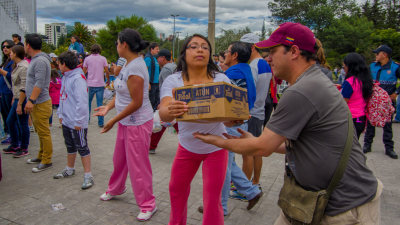Focus On: Critical infrastructure resilience and perceptions of disaster preparedness
This page is approximately a 2 minute read

This short report is the fourth of our ‘Focus On’ series, and explores links between the resilience of critical infrastructure and perceptions of government disaster preparedness.
Resilience, infrastructure and a safer world
people who have experienced a disaster have also lost access to critical infrastructure for more than a day.
Lloyd’s Register Foundation has had a strong interest in resilience since we published our Foresight Review of Resilience Engineering in 2015. A key focus of the review was on building the resilience of infrastructure sectors such as electricity, water, transportation, telecommunications, healthcare, and food which are critical to preserving life and supporting a rapid return to normality.
The World Risk Poll represents an ideal tool to explore people’s experiences and perceptions of risk and to begin understanding resilience at a granular level, especially in countries where such data is not routinely collected or available. Resilience formed a core part of our 2021 Poll and a wider discussion of these concepts can be found in our ‘A Resilient World? Understanding vulnerability in a changing climate’ report.
Ensuring the safety of critical infrastructure will continue to be a core goal of the Foundation, and assessing resilience – both of infrastructure and of people and communities more broadly – will be a major element of future World Risk Polls.
Key findings
- 57% of people reported losing access to at least one form of critical infrastructure (clean water, food, medical care, electricity, telephone service) in the last year. This rises to 75% among people who have experienced a disaster in the previous five years.
- Globally, more people think their national government (51%) is better prepared than their local government (48%) to deal with a future disaster, although there are significant regional variations.
- Loss of access to critical infrastructure impacts perceptions of local government preparedness more negatively than for national governments. For example, those who experienced a disaster and lost access to clean water had 6.8 percentage points greater confidence in national vs local government preparedness.
Download the report

Focus On: Critical infrastructure resilience and perceptions of disaster preparedness
This short report is the fourth of our ‘Focus On’ series, and explores links between the resilience of critical infrastructure and perceptions of government disaster preparedness. (PDF, 1.97MB)
Citation
If you wish to use and reference the Focus On: Critical infrastructure resilience and perceptions of disaster preparedness in your own work, please include the following DOI: https://doi.org/10.60743/F7GW-A765
Example Citation in IEEE Style:
Lloyd's Register Foundation. (2023). World Risk Poll 2021 Focus On: Critical infrastructure resilience and perceptions of disaster preparedness. Lloyd's Register Foundation. https://doi.org/10.60743/F7GW-A765